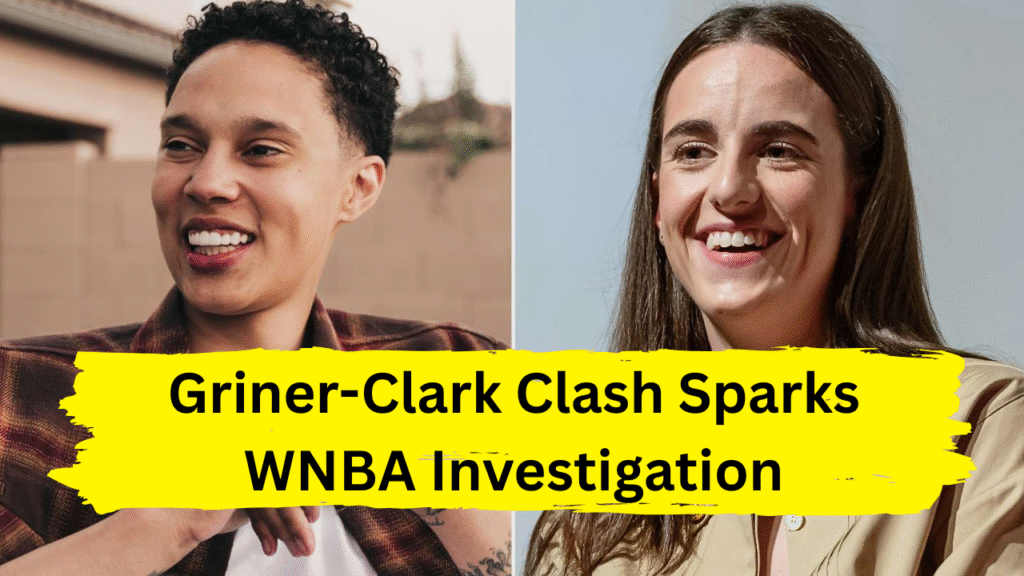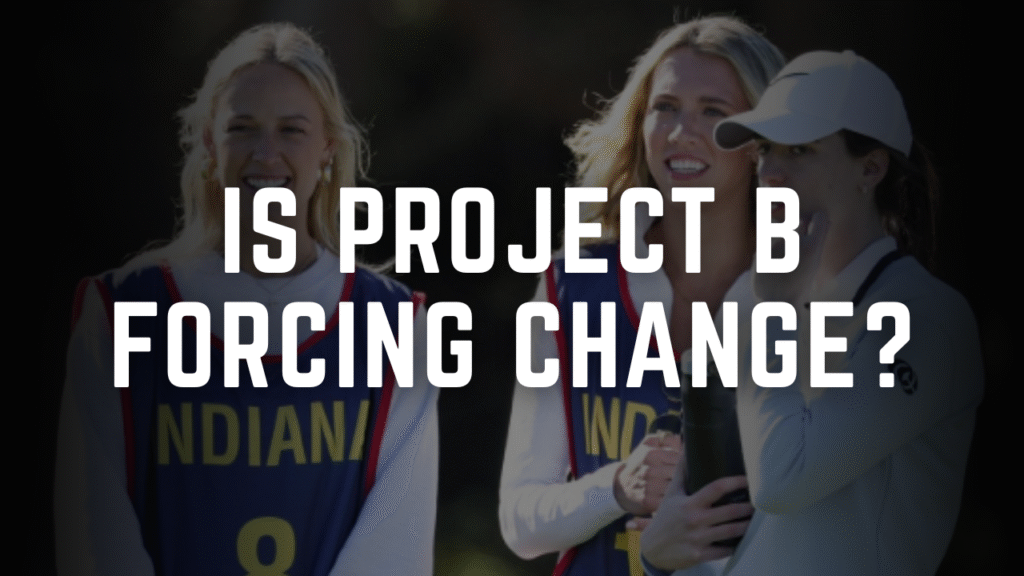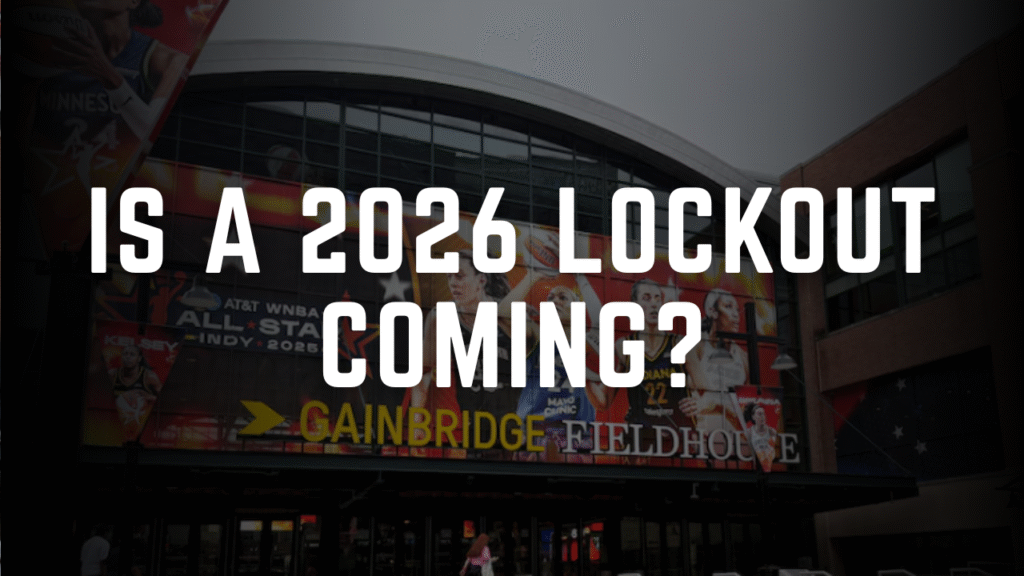The WNBA’s 2025 season has become a lightning rod for controversy, not for its high-flying athleticism but for a series of incendiary moments that have thrust the league into a firestorm of debate. At the center of this maelstrom is Brittney Griner, the Atlanta Dream center, whose alleged racial slur toward Indiana Fever rookie Caitlin Clark during a heated matchup has sparked outrage, investigations, and a reckoning over race, accountability, and the league’s commitment to its “No Space for Hate” pledge.
The Viral Flashpoint: A Clash of Titans
The May 23 Fever-Dream game was already charged with playoff-level intensity. Indiana narrowly edged Atlanta 81–76, but the postgame headlines centered on a fourth-quarter exchange between Griner and Clark. After fouling out with 3:38 remaining, Griner was captured on camera appearing to yell “trash f***ing white girl” in Clark’s direction as she exited the court . Though no official audio confirmed the remark, the video spread rapidly across social media, igniting a debate over intent, context, and racial dynamics in women’s basketball.
The incident occurred amid a physical game marked by skirmishes, including a first-quarter verbal exchange between Clark and Atlanta’s Rhyne Howard. Griner, who struggled with five points and seven rebounds, later faced scrutiny not just for her words but for her body language—an elbow raised during a screen on Clark and visible frustration with officiating .
Riley Gaines and the Double Standard Debate
The backlash intensified when Riley Gaines, former NCAA swimmer and activist, amplified the clip on social media. Gaines juxtaposed Griner’s alleged comment with the player’s 2022 release from Russian detention in a prisoner swap for arms dealer Viktor Bout, writing: “Brittney Griner, whom Biden traded for the Merchant of Death, called Caitlin Clark… ‘trash f*ing white girl.’ Now imagine if Clark had said the inverse!” . Her post underscored a recurring critique: perceived inequity in how the WNBA addresses racial remarks depending on the parties involved.
Gaines’ intervention fueled a polarized response. Some fans demanded Griner’s suspension, arguing that racial language has no place in sports. Others dismissed the incident as miscontextualized trash talk, suggesting Griner may have directed the comment at a white referee rather than Clark . The ambiguity—no microphone captured the audio, and neither Griner nor Clark has publicly clarified—left room for speculation, but the damage to the league’s image was immediate.
The WNBA’s Silence and Selective Accountability
The league’s response has been notably muted. While the WNBA swiftly launched an investigation into alleged racist slurs hurled at Chicago Sky star Angel Reese by Fever fans days earlier , it has yet to address the Griner-Clark incident. This inconsistency has drawn sharp criticism. Critics argue that the league’s “No Space for Hate” initiative, unveiled to combat racism and homophobia, rings hollow when high-profile players appear exempt from scrutiny .
The Fever organization, meanwhile, has remained cautious. While CEO Mel Raines emphasized a commitment to player safety amid the Reese investigation, neither Indiana nor Atlanta has commented on Griner’s alleged remarks . This silence has only amplified frustrations among fans and analysts, who see a double standard in how the league polices fan behavior versus player conduct.
Caitlin Clark: Caught in the Crossfire
Clark, the Fever’s 23-year-old phenom, has become an unwitting symbol of the WNBA’s growing pains. Her meteoric rise—marked by record-breaking performances and a fervent fanbase—has drawn both admiration and resentment from veterans. Griner herself previously criticized the “new fans” Clark attracts, alleging some have hurled racial slurs at Black players . Yet Clark has consistently denounced racism, stating after the Reese incident: “There’s no place for that in our game, there’s no place for that in society” .
Her refusal to engage in the Griner controversy—she has not publicly addressed the clip—contrasts with her vocal stance on inclusivity. This dichotomy highlights the tightrope Clark walks as a white superstar in a league where 80% of players are Black, and where her success is often framed through a racial lens .
The Bigger Picture: Race, Rivalry, and the WNBA’s Identity Crisis
The Griner-Clark clash is more than an isolated incident; it reflects deeper fissures in the WNBA. The league’s efforts to capitalize on Clark’s popularity—evident in sold-out arenas and soaring ratings—have unearthed tensions between legacy players and newcomers. Griner’s alleged remark, whether aimed at Clark or a referee, taps into a broader narrative of veteran resentment toward the attention and marketing clout afforded to Clark .
Moreover, the incident underscores the league’s struggle to balance growth with integrity. While the WNBA has condemned fan misconduct, its reluctance to address player-on-player allegations risks alienating both traditional supporters and the new audiences it seeks to attract. As one fan tweeted: “If the league wants to be taken seriously, it needs to hold everyone accountable—players included” .
What Comes Next?
As of May 25, the WNBA has not confirmed an investigation into Griner’s alleged slur, leaving the basketball world in limbo. The Fever and Dream are slated to meet twice more this season, with their June 10 matchup in Atlanta expected to draw heightened scrutiny . Whether the league addresses the controversy head-on or lets it fade into the background will test its commitment to the values it publicly champions.
For now, the incident remains a Rorschach test for fans: a moment that reveals entrenched biases, unresolved grievances, and the complexities of race in sports. As the WNBA grapples with its identity, one truth is undeniable—the path to progress demands consistency, transparency, and the courage to confront uncomfortable truths.


